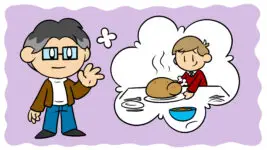Pinterest may be the dark horse of social media sites, but it’s a dependable avenue for attracting readers, and is beginning to be mentioned in the same breath as Twitter and Facebook. Huge among specific demographics, and increasing its user base with each passing day, the site has reached a point where enough Pinterest followers can mean big business for authors.
In this article I’ll be looking at exactly what authors have to gain, and how they can attract 1000 Pinterest followers with minimum effort. It’s a big number, but surprisingly success is more a matter of diligently following the steps below than getting lucky.
What can Pinterest do for you?
Authors stand to benefit from social media in many different ways, but Pinterest actually has three main qualities that can help with marketing your work:
- It’s aspirational,
- Content has an extremely long shelf life,
- It influences buying behaviour.
I’ll address these points one by one, but in simple terms, Pinterest allows direct, effective marketing in ways that outshine even Facebook and Twitter. That’s not to say that it’s the new must-join site: it lacks most of the brand-building and fan-interaction that those other sites offer, but in terms of marketing and publicizing your work it’s a godsend.
Pinterest is built around a simple function: users group images from websites on ‘boards’ that allow them to express, explore or create a theme – the stereotypical Pinterest user is a bride-to-be collecting wedding ideas. These boards are visible to other users, who can ‘repin’ the images to their own boards, with each image acting as an instant link to the site from which it came (and including a brief description underneath). As with most social media, this means that one user who enjoys your content is effectively advertising it to everyone who looks at their board.
This gives pins a unique virality – imagine, for instance, that a user is setting out to fill a ‘My favorite books’ board. They may go looking for the books they know on other users’ boards, but in searching them out, they’ll also see the other books those users have pinned. In this way, and many more like it, it’s easy for people to encounter your content as a sort of recommendation. Every pin you create is a viral advertisement that potential customers might encounter in different situations, each time pleased to see it because they made the discovery for themselves.
Perhaps it’s because of this combined effectiveness and good-will that Pinterest pins are such effective advertisements. Many users utilize Pinterest to plan future purchases, with some sources estimating that 88% of users have gone on to purchase something they’ve pinned. This is a much higher rate of ‘conversion’ (from browser to buyer) than any other social media site, including Facebook and Twitter.
Finally, pins remain in circulation for a long time. Unlike Facebook and Twitter, Pinterest doesn’t trade on immediacy, so your created content will still be visible weeks and even months after you share it.
What are the downsides?
At this point, Pinterest may be sounding like the perfect site, and while it’s pretty great, that’s not the case. The vast majority of Pinterest users are women (with most sources suggesting an approximate 80/20 split) – with men creating around only 7% of pins – and the site is particularly popular with the ‘millennial’ age group, meaning the demographics you can reach en masse aren’t very flexible. The site is also most famous for crafts, cuisine, fashion and decoration, meaning that while it’s effective, it’s not a dedicated literary platform.
Finally, Pinterest devours content. This is partly because content is so basic and easy to share – a single image and a click is all it takes – but that still means you’ll have to invest some time. If you want to share a page or product you’ll need an accompanying (and attractive) image. The journey to 1000 Pinterest followers requires a steady stream of content, so there’s a considerable time investment that’s less pronounced with other sites.
Pinterest may or may not be for you, but there’s no denying that it’s an effective advertising service that’s only going to grow in popularity for the foreseeable future. If you think there’s a chance of reaching potential readers – and you’re willing to roll up your sleeves and work for some attention – then I suggest you read on.
Getting 1000 Pinterest followers
As with any social media site (and most public platforms), more people will check out your content if you’re already popular. Gaining 1000 Pinterest followers will take you to the point where users are finding you on their own – stumbling across your work while searching for related topics, or having your pins recommended according to their interests – so that’s the goal of this article.
That’s not to say that it’s only good for your first thousand – the techniques described in steps 5 and 6 will keep pulling in new Pinterest followers even once you’ve established a reliable user base. Before that, though, you have to cover the basics.
Step 1 – Join up
Obviously, getting some attention on Pinterest is far easier if you’re a member of the site. While it may be tempting to fill out the bare minimum information, it’s important to include as much detail as you can at this stage. Later, you’ll be creating special pins which include prices and other information that normal pins don’t have, and users are going to want to know that you have the authority for them to trust what you’re saying. To this end, be sure to fill out:
- Email address,
- Contact name,
- Business name (likely to be the same as contact, unless you write under a pseudonym),
- Profile picture (this doesn’t have to be you, but should be related to your professional life: an author photograph or book cover image is ideal),
- About section (no need to go overboard, but make it clear at a glance that you’re the author rather than a dedicated fan),
- Website (including any blogs related to your writing),
- Custom username and URL,
- Location,
- Connected social networks.
This may seem like a chore, but it’s all about establishing yourself as an authority. Pinterest pins don’t feel like advertisements, but they are, and potential customers need to be able to quickly verify that what they’re seeing is the real deal.
If you want to save time then it’s fine to cannibalize similar content from your author website. If it’s a little sparse, this is a good time to update it, since it’ll be a great source of content in a few steps’ time.
Step 2 – Verify your site
Verifying your site is a quick and easy way to tell Pinterest that you’re not just a fan. This has two major advantages. The first is the addition of a ‘verified’ tick icon on your account – again, this tells users that they can trust what you’re saying, and that you should be the first place they visit for relevant content: you’re not just repinning existing content, but providing something new.
The second advantage is that you’ll be able to create ‘Rich Pins’. There are multiple categories of rich pins (though ‘product’ is the relevant one, here), and they allow you to add extra information, such as prices, to your images. This has an immediate effect on buying behaviour, and instantly presents your books and related products as things which are for sale (many products featured on Pinterest aren’t), and which the user could get for a fixed price.
On average, rich pins receive more likes than regular pins, and users who pin your images will pass this information on, even if their own account isn’t validated (your own validation means the site trusts you as a source). Validation is simple, but if you’re going to use rich pins then be sure to check them with Pinterest’s rich pin validator, which ensures the new information is understood by the site.
Step 3 – Share your Pinterest profile via social media and email lists
Brand synergy is a must, so it’s essential to tell your Facebook and Twitter followers that you’re on Pinterest. This should net you some immediate Pinterest followers, as users of multiple sites naturally decide to follow you through different channels.
Share links to your Pinterest account on social media sites and via your email list. If you blog then make a short announcement, and add your Pinterest address to any ‘about’ sections on your sites or social media. Make it as easy as possible for users of one service to find you on another. Before going after new followers, it’s important to consolidate what you already have.
Step 4 – Include Pinterest buttons on your sites and blogs
Pinterest users can create pins by entering URLs into the site, but it’s a bit of hassle for a service founded on near-immediate browsing and sharing. Making it easier for users to share your content is therefore a must, and is thankfully really easy to do.
All you have to do is visit the Pinterest widget builder. This tool will help you add features to your own sites and blogs, including the ability for visitors to share any image straight to Pinterest or follow you on Pinterest without leaving your site.
The widget builder may look a little daunting, since it’s full of computer code at first glance. Don’t worry though – this code is what the builder has created on your behalf, and all you have to do is follow the simple instructions to copy and paste it to your own site.
Once you’ve set up a few widgets, you’ve created two-way traffic between Pinterest and your other sites. Now Pinterest users who follow a pin to your site will land in a space filled with easily shareable content – they’ll be advertising you on the social media site while they’re still checking out your blog.
Step 5 – Target your market
The following may sound sneaky (it’s often presented as such), but actually it’s just sensible research for building a social media audience. Basically, the idea is to target people who might be interested in your content and follow them. Social media has a follow-back culture, so by doing so you’ll gradually accrue a reliable, constant stream of new Pinterest followers who are interested in what you have to share.
Here’s the sneaky part: there are two main ways to find and target potential Pinterest followers. The first is to research popular hashtags, see who is using and following them, and start following those users. The second is to find the pages of authors in your field and mercilessly follow everyone who’s following them.
This is often presented as ‘stealing’ from your competitors, but it’s nothing of the sort. One writer doesn’t lose a fan because they’re interested in similar work, and it’s no disservice to the fans themselves – if anything, they’ve shown themselves to be fans of a particular genre with an interest in following relevant authors, exactly the demographic you should be targeting on social media.
That’s not to say that you should simply follow everyone at once – step 6 depends on you managing new followers, so don’t go crazy. Instead, follow 50-150 users on a daily basis. This is a good habit to keep up, since not all of them will follow back, but it should take around two weeks for you to have sown the seeds of your 1000 Pinterest followers. How do you grow those followers, you ask? Well…
Step 6 – Attract interest and create engaging content
Now that people are starting to look at your pins, it’s time to bring the content. Remember that your goal here is a little different from the average Pinterest user – you’re not looking to share a variety of images: you’re looking to share as many of your images as possible to build interest in you as an author and direct potential customers to your work.
This will involve sharing other content – you need to build an enjoyable platform to encourage visitors – but make sure to keep your eye on the prize. Start out with ten boards of your own, and share content across them. More boards allows you to share content naturally, and encourage visitors to browse. As you continue adding 50-150 users a day, create 3—5 new boards per week and fill them up with content. Make sure to include descriptions of 200—300 words, and use copious hashtags – Pinterest sees a lot of topic-based searches, so be sure not to discount traffic that you haven’t directly invited.
The aim is to make this a drawn-out process so that new followers aren’t overwhelmed, but have plenty to look through. Ten to fifteen pins per hour is the sweet spot here.
The final piece of the puzzle is to go through your feed – the content provided by all the people you’re following – and repin twenty to thirty pins across your boards. Again, not all at once: two sessions of ten to fifteen repins will keep it feeling natural.
Users whose content you’ve repinned will be flattered and check out your boards, creating a natural process of sharing. Since you’re targeting a community of users, awareness will spread and compound, and the steady stream of new followers, new content and new repins will build over the days and weeks that follow. Users will very naturally become aware of your presence, and long-life content will keep pulling them in even after you stop the daily regimen of attracting interest.
This may all seem like a lot of work, but remember that Pinterest is based around easy, quick use – sharing content, or following a user, is as easy as sticking a pin in a board. The site chooses from available images, so streamlined that you’ll find yourself doing the minimum of work to create something lasting. It won’t be a complete breeze, but what work there is will be over in a matter of weeks, and if you’re linking to your book then it’s even paid.
Keep it up
As I said earlier, the above steps are as close to a guarantee as you can get on social media – it might take a while, but with a steady stream of targeted follows and serviceable content, you’ll reach 1000 Pinterest followers and see that number grow for as long as you perform reasonable maintenance on your account.
The most important things to remember are to keep going – early growth is going to be exponential, and your acorns will become oak trees – and to provide as high a quality of content as possible. Pinterest users are curating boards, and attractive content won’t just look good to them, but make them look good to their own followers. Help them with that and you’ll have dedicated, long-term fans who’ll spread your content far and wide.
For more on social media, try The 7 social media rules every author needs to know, or if you want the promotion but don’t know where to start, check out our Marketing Services for some great services from a trustworthy source.
Do you have any tips and tricks for attracting Pinterest followers, or do you think authors can spend their time better elsewhere? Either way, let me know in the comments.





